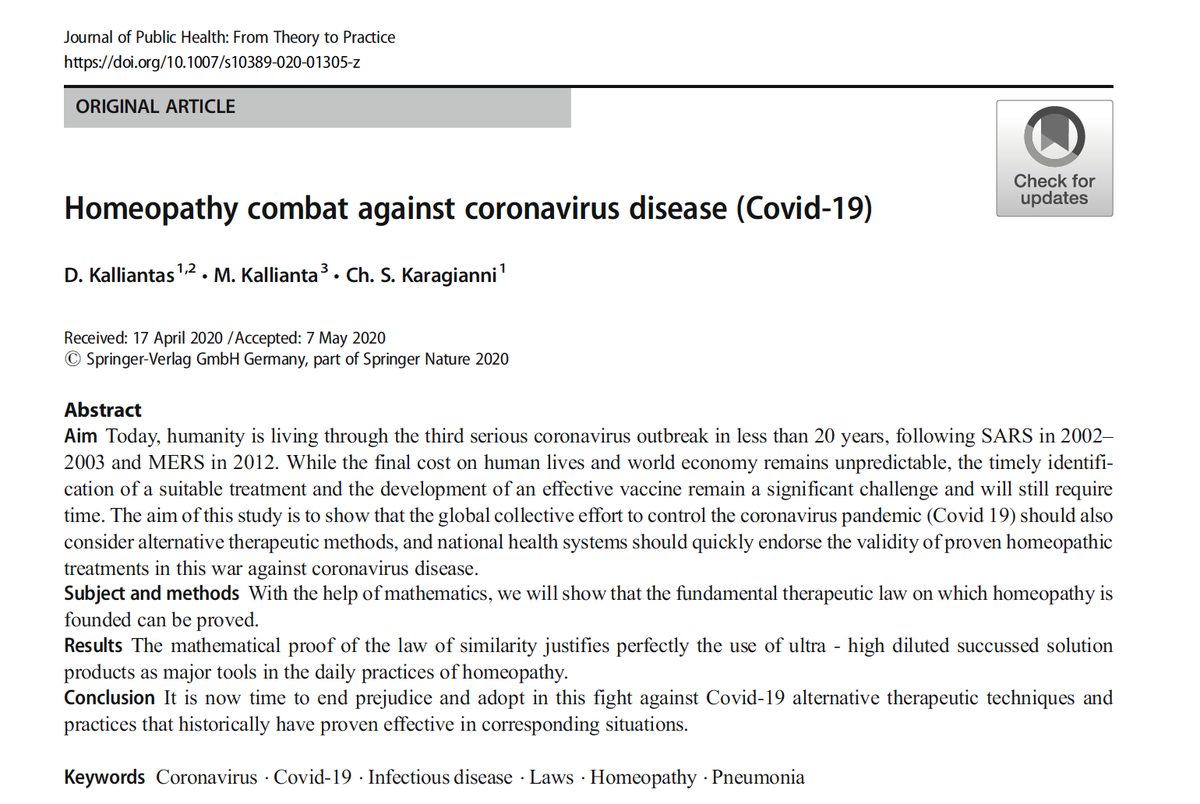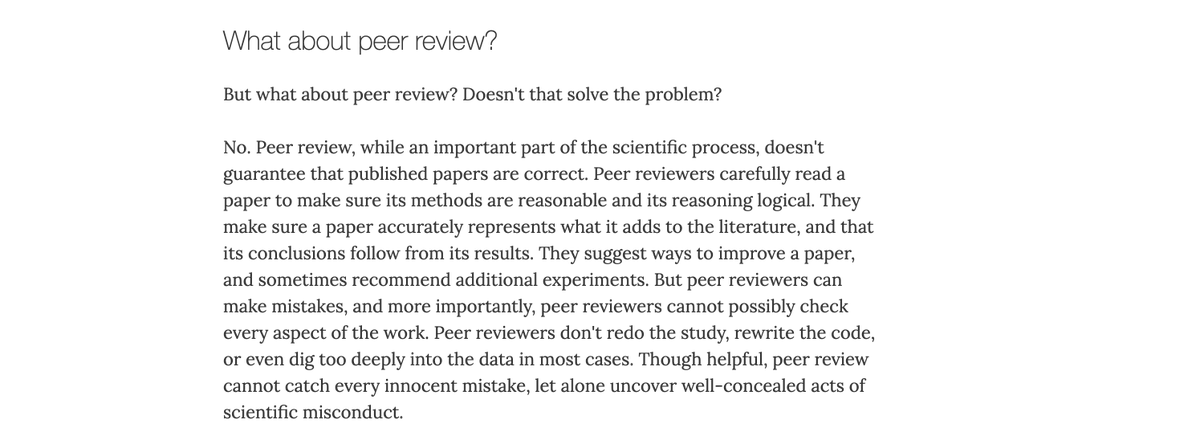
My colleague, epidemiologist @joel_c_miller, has done a great job of debunking mis- and disinformation throughout the pandemic. In this great thread, he takes on the claim that COVID is basically harmless, and any excess deaths are due to fear and stress from social precautions.
https://twitter.com/joel_c_miller/status/1367006825598521347
Instead of calling the person an idiot, he does nice job of explaining how you might test such a hypothesis — and then looks to the data to show that this story about fear and stress is entirely unsupported. The whole thing is well worth a read.
But there's something else interesting here.
The fear-and-stress argument is introduced with an historical account about a medieval experiment conducted by medieval Persian philosopher Avicenna / Ibn Sīnā.
The story is *total bullshit.*
Avicenna did no such experiment.
The fear-and-stress argument is introduced with an historical account about a medieval experiment conducted by medieval Persian philosopher Avicenna / Ibn Sīnā.
The story is *total bullshit.*
Avicenna did no such experiment.

Avicenna did speculate about how sheep know to fear wolves of his treatise De Anima (On the Soul).
But he didn't do this experiment, or write about anything like it.
iep.utm.edu/avicenna/
But he didn't do this experiment, or write about anything like it.
iep.utm.edu/avicenna/

In the English language, I can track this particular bit of misinformation back to a trite pop-psych blog post from April, 2020.
The post references an entry about the aforementioned De Anima.
kn-ow.com/article/ibn-si…
The post references an entry about the aforementioned De Anima.
kn-ow.com/article/ibn-si…

But the story is at least a few weeks older. Octav-Sorin Candel actually wrote a paper tracking this false story back to a March 19th 2020 facebook post in Romanian.
mrjournal.ro/docs/R2/37JMR3…
mrjournal.ro/docs/R2/37JMR3…

Courtesy of Google Translate:
"You heard about Avicenna's experiment"
"The experiment involves a lamb and a wolf placed in a cage next to it. The lamb died shortly thereafter from the stress caused by fear."
"You heard about Avicenna's experiment"
"The experiment involves a lamb and a wolf placed in a cage next to it. The lamb died shortly thereafter from the stress caused by fear."
"Scientists say that when we are afraid, the body no longer secretes the necessary chemistry and a cell dies. And if the fear is great, then all the cells in the body die."
(Ed. note: Scientists say no such thing.)
(Ed. note: Scientists say no such thing.)
I guess the lesson here is that bullshit clumps.
Here we have a false and disingenuous argument that COVID is no worse than the common cold, gift-wrapped in a fabricated pop-psych tale about a medieval polymath.
Here we have a false and disingenuous argument that COVID is no worse than the common cold, gift-wrapped in a fabricated pop-psych tale about a medieval polymath.
In our course we define bullshit as "language, statistical figures, data graphics, and other forms of presentation intended to persuade by impressing and overwhelming a reader or listener, with a blatant disregard for truth and logical coherence."
The Avicenna story is classic bullshit. Most readers don't know a lot of medieval Persian philosophy. The creators are counting on it.
And they pull a little trick, as well, trying to make you think that this is common knowledge:
"You heard about Avicenna's experiment..."
And they pull a little trick, as well, trying to make you think that this is common knowledge:
"You heard about Avicenna's experiment..."
The author of the thread about deaths from fear rather than COVID does the same thing. I'm not going to go through exhaustively, but let's look at one tweet.
It starts with an appeal to the fabricated story (which would be poor evidence even if true.)
https://twitter.com/goddeketal/status/1366752780308910085
It starts with an appeal to the fabricated story (which would be poor evidence even if true.)
Then we get entirely gratuitous technical language that I suppose is supposed to sound like what the author or his readers think that scientists sound like?
Myself, I say "people" instead of "the mammal homo [sic] sapiens."
Myself, I say "people" instead of "the mammal homo [sic] sapiens."
Then we get a scientifical graphic that I suppose is intended bolster some of the other endocrinebabble in the thread.
The post concludes with the same old trick we saw in the Avicenna story. "This is general knowledge."
Who are YOU to question the emperor's clothes, after all?
The post concludes with the same old trick we saw in the Avicenna story. "This is general knowledge."
Who are YOU to question the emperor's clothes, after all?
Pretty impressive for 280 characters, actually.
In any case, the take-homes are three:
· Bullshit isn't so hard to spot when you know what you're looking for
· When in doubt, trace back to the source.
· Don't try to learn medieval Persian philosophy from COVID grifters.
In any case, the take-homes are three:
· Bullshit isn't so hard to spot when you know what you're looking for
· When in doubt, trace back to the source.
· Don't try to learn medieval Persian philosophy from COVID grifters.
• • •
Missing some Tweet in this thread? You can try to
force a refresh











